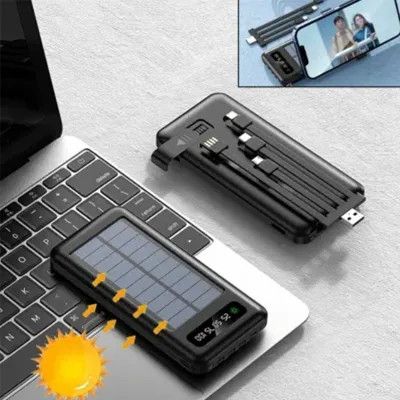How Solar Panels Generate Electricity
Solar panels work by converting sunlight into electricity through the photovoltaic (PV) effect. Here's a step-by-step breakdown of how they function:
1. Absorption of Sunlight
- Solar panels are made up of solar cells, typically composed of silicon.
- When sunlight (photons) hits the solar cells, it excites the electrons in the silicon material.
2. Generation of Electric Current
- The solar cells have a positive and negative layer, creating an electric field.
- The excited electrons move towards the positive layer, creating a flow of electricity (direct current or DC).
3. Conversion of DC to AC
- The generated DC electricity is not directly usable for most household appliances.
- A device called an inverter converts DC into alternating current (AC), which is the standard type of electricity used in homes and businesses.
4. Powering Homes or Storing Energy
- The converted AC electricity is sent to your home’s electrical system to power appliances.
- Excess electricity can be stored in batteries (for later use) or sent to the electric grid (if connected).
5. Net Metering (If Grid-Connected)
- If your system produces more electricity than you use, the extra power goes back to the grid.
- Some energy providers offer net metering, where you earn credits for the surplus electricity.
Key Components of a Solar Power System
- Solar Panels – Capture sunlight and produce electricity.
- Inverter – Converts DC to AC power.
- Battery (Optional) – Stores excess energy for later use.
- Net Meter (If Grid-Tied) – Measures energy used and sent back to the grid.
This process allows homes, businesses, and industries to generate clean, renewable electricity from the sun, reducing reliance on fossil fuels and lowering energy costs.
Featured Products - Highlighted Selections - Standout Products We Love
Our featured products are special products liked and recommended by our customers.They are special in design, shape with distinctive values

